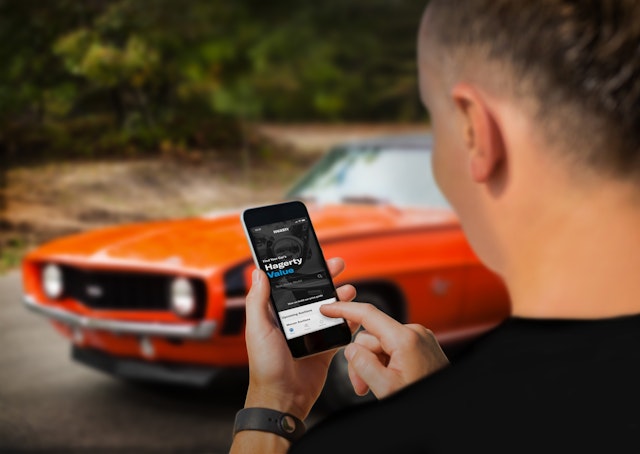How To Know Classic Car Values Before Buying or Selling

We all know that haggling over the real price of a car can be part of the fun of purchasing (for some of us, at least), whether it’s a brand-new ride or a Brass Era classic. That said, with so many resources available to classic car owners, nailing down the actual value of a vintage car isn’t as variable as it used to be. If you’re looking to buy or sell, you need to know: What is your classic car actually worth?
Here’s how to figure out your classic car values based on a few different factors:
Education, Not Emotion
For many of us, the purchase of a classic car is the fulfillment of a lifelong dream. You might be at a place where you can finally fire up that Mustang just like when you were 16, or maybe you’re living out an Italian supercar fantasy that you never thought you could afford.
Now’s the time to make sure you’re purchasing not with your heart, but with your head. Online resources need to be your first stop when it comes to selecting a car to buy or know how much to sell. Historical pricing is great, but what these vehicles are selling for right now is what you need to know.
Other auction sites like eBay Motors, Bring A Trailer and Hagerty Marketplace are also great to keep an eye on as they’ll not only tell you the final sale price, but you can keep an eye on how many bids a car receives or how quickly certain cars tend to sell. If you’re looking for a more sought-after vehicle, you need to know more specifics on exactly what you want, because once one hits the market you’ll need to make a decision fast.
Classic car value guides like these will help you figure out if your dream car is actually in your price range, or even inspire you to find another type of classic car.
You’ve Found Your Car - Now Find Its Rating
Every auto sales site seems to have its own proprietary way of grading this, but they all boil down to the same judgement: Is the car in Excellent, Fine, Very Good, Good, or Restorable shape? Or … is it a Parts Car? This is the six-step rating system instituted by magazine publisher and valuation specialist Chet Krause in the 1970’s and it helps to inform our own #1-4 Condition Rating system at Hagerty.
All of this will affect how much you can expect to pay for a classic car of any kind. There’s no fixed percentage or dollar amount that any rating will add or subtract from a car’s overall value - original parts for an extremely rare, highly-valued car could outvalue a picture-perfect “bellybutton” car (aka: everyone’s got one).
Going beyond these broader classifications, you’ll find that the smaller details about a car are where the price starts to get much more variable (and debatable). What’s the added value of an operating A/C system? How much does that rip in the driver’s seat take away? If there are multiple scratches to the paint job, does that lower the value further than a similar car with an alternator that needs to be replaced?
Another good way to learn what to look for is in Experien’s AutoCheck system, which uses a points system to rate vehicles. You won’t get specifics for anything built before 1981, but it can serve as a guide for what you can look for on your own.
Trust, but Verify: Doublecheck The Seller’s Claims
Any time you purchase a vehicle, we’d strongly recommend a pre-purchase inspection from a qualified mechanic. This goes for any used car or truck purchase, but when you’re acquiring a classic car, it’s even more important to confirm what the seller is claiming. We’re not here to accuse sellers of falsifying info about their cars - but a casual owner may make assumptions about a car that aren’t justified when you get it onto a lift, or may be making claims of a car that may be outdated or simply inaccurate to that model year.
It will probably run you a couple hundred bucks to get the car looked at by a professional, but that’s well worth the cost if you’re looking at a six-figure transaction. You’ll want to know if the VIN match between the transmission, engine, and chassis, if the paint is original or at least the original color sold with the car, and confirm the overall health of the vehicle. These are things can’t be fully assessed just in a quick test drive around the block, or even at a test track.
Best case scenario, you’ll get independent confirmation that you’re buying what you expect and won’t have any surprises down the road. It could even give you more information about the car that the seller might not have … which can help you adjust the price you’ll pay.
Your Best Bet: Check the Hagerty Valuation Guide
As a member of the Hagerty Drivers Club, you’ll have full access to our valuation tools, including pricing (from Affordable Classics to Blue Chip Collectors), our own VIN Decoder and even a watchlist to keep track of the cars of your dreams.
Our online valuation guide gives you an overview of a variety of classic vehicles, plus historical pricing for many models of vintage or classic cars and even info on recent sales. You can find some pretty obscure, rarely-collected cars in here - which means that if I want to relive my high-school days driving in a mid-80’s Cadillac Cimarron, I won’t overpay for the pleasure.
Now that you know what your classic car is worth, the next step is making sure it’s properly protected. Just like valuations, not all insurance is created equal—your vintage ride deserves coverage designed specifically for collector vehicles. Hagerty offers insurance tailored to the unique needs of classic car owners, with agreed value coverage, flexible usage options, and expert support. Get a quote today and ensure your prized possession is safeguarded for the road ahead.
